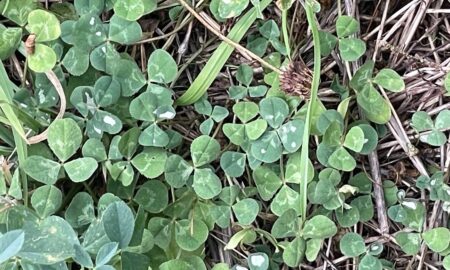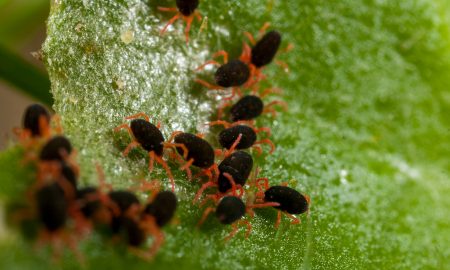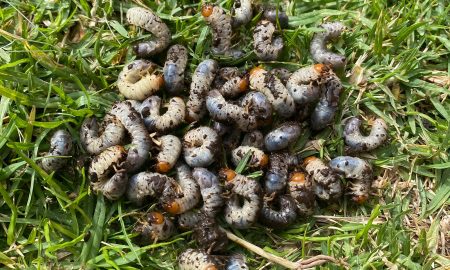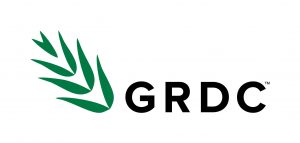Not all crops are equally susceptible to native budworm damage, and those that have a higher threshold, like canola, often do not need spraying.
But recently there has been an unexpected surge in larvae, raising questions about management across crop types.
Here we explore why native budworm activity is high in some paddocks and provide some information to support management decisions.
What is the native budworm?
The native budworm, Helicoverpa punctigera, (often referred to as Heliothis), is a familiar sight in south-eastern crops during late winter and spring.
Once this native moth migrates into crops, it begins laying eggs, and it’s the ensuing larvae that are the cause of damage, feeding on a wide variety of host plants including the fruiting parts and seeds of pulses and canola.
During pod development field pea, chickpea, lentil and faba bean crops are very susceptible to damage by native budworm larvae of all sizes.
Narrow-leaved lupin and canola crops have a higher threshold for native budworm larvae; they don’t tend to be at risk of damage until they near maturity and leaf fall starts.
Why are numbers high this year?
In the past 7 – 10 days, farm advisers have reported unusually high numbers of native budworm in crops across the Victorian southern Mallee and Wimmera – as high as 20-30 larvae per 10 sweeps in some canola paddocks.
These are two reasons why native budworm larvae number could be higher than usual this season:
Good breeding conditions over winter
During winter, the native budworm breeds on flowering plants in Australia’s arid interior, migrating to agricultural regions when this inland vegetation dies off in late winter/spring.
This winter, parts of the native budworm’s winter breeding zone received above average rainfall. This likely encouraged a higher abundance of native host plants, and leading to higher moth population growth that’s now impacting southern cropping regions.
An increased chance of egg survival
This season, drier conditions in some regions may be giving native budworm eggs a better chance of survival.
This theory is supported by a study by Kyi et al. (1991) on the closely related Helicoverpa armigera in cotton, which showed that rainfall was an important factor in egg mortality, dislodging eggs from the plants and reducing the number of larvae that hatched.
Without rain to wash eggs away, as we see in drier seasons, more eggs remain, leading to higher hatching rates.
Managing native budworm
Economic thresholds
Dynamic economic thresholds have been developed for the native budworm in Western Australia, and should apply to south-eastern cropping regions.

Grain loss per larva (kg/ha) depends on crop type and excludes very small larvae:
- Field peas: 50 kg/ha
- Lentils: 60 kg/ha
- Faba beans: 90 kg/ha
- Chickpeas (desi): 30 kg/ha
- Canola: 6 kg/ha
- Lupins: 7 kg/ha
For example, if canola is $700/tonne and the cost to control larvae is $20/ha:

Spray considerations
Native budworm has not evolved resistance to insecticides, though they are best controlled while they’re still young – up to 7 mm in length.
In fact, some actives aren’t recommended for use after larvae reach a certain growth stage (e.g. Nucleopolyhedrovirus).
Always check labels for their critical comments when considering which insecticides to use.
Keep an eye on the weather forecast when planning to spray, too. Warm temperatures can trigger small larvae to burrow into pods, which can reduce efficacy of contact insecticides.
Beneficials can help too
Large aphid colonies are also present in many paddocks and are attracting loads of beneficials to crops. There is some overlap in the beneficials that attack aphids and native budworm. For example, lacewings and ladybird beetles are generalist predators and likely prey on native budworm eggs and small larvae.
However, small generalist predators that feed on aphids are unlikely to overcome large native budworm larvae.
Some beneficial predators that are likely able to feed on large native budworm larvae include the spined predatory shield bug, assassin bugs and spiders.
There are also caterpillar parasitoids such as tachinid flies, orange caterpillar parasite wasp (Netelia producta), two-toned caterpillar parasite (Heteropelma scaposum) and orchid dupe wasp (Lissopimpla excelsa), which parasitise large native budworm larvae.
Not to be confused with corn earworm
Native budworm may be confused with the almost identical, corn earworm, Helicoverpa armigera.
Whilst the two species overlap in their host range to an extent and both are spring/summer pests, knowing if corn earworm is present in crops is important to ensure correct management as it has evolved resistance to insecticides.
During the winter cropping season, corn earworm is generally associated with warmer regions such as northern to central New South Wales. Most years, by the time it’s warm enough for corn earworm activity in Victoria and southern New South Wales, many winter crops are typically no longer at risk.
However, given that we’ve had warmer than average temperatures in August and September, corn earworm may show up earlier than usual this season and impact maturing crops in the south-east. This is supported by recent data from a corn earworm pheromone trap in Wagga Wagga, which has been detecting moth activity since September.
So how will you know if there is corn earworm in your crops?
There are two features to look out for when telling these two species apart as larvae.
1) the dark ‘saddle’ on the fourth body segment on corn earworm. This is absent on native budworm.
2) hair colouration around the head region. Native budworm has black hairs, whereas corn earworm has white hairs. You will require a hand lens or camera lens to view this feature.
It is important to note that these indicators are not always reliable, and they are often only visible on larger caterpillars.
If in doubt, please contact our Pestfacts south-eastern team and we can help you with an identification on 0484 310 697 or pestfacts@cesaraustralia.com.
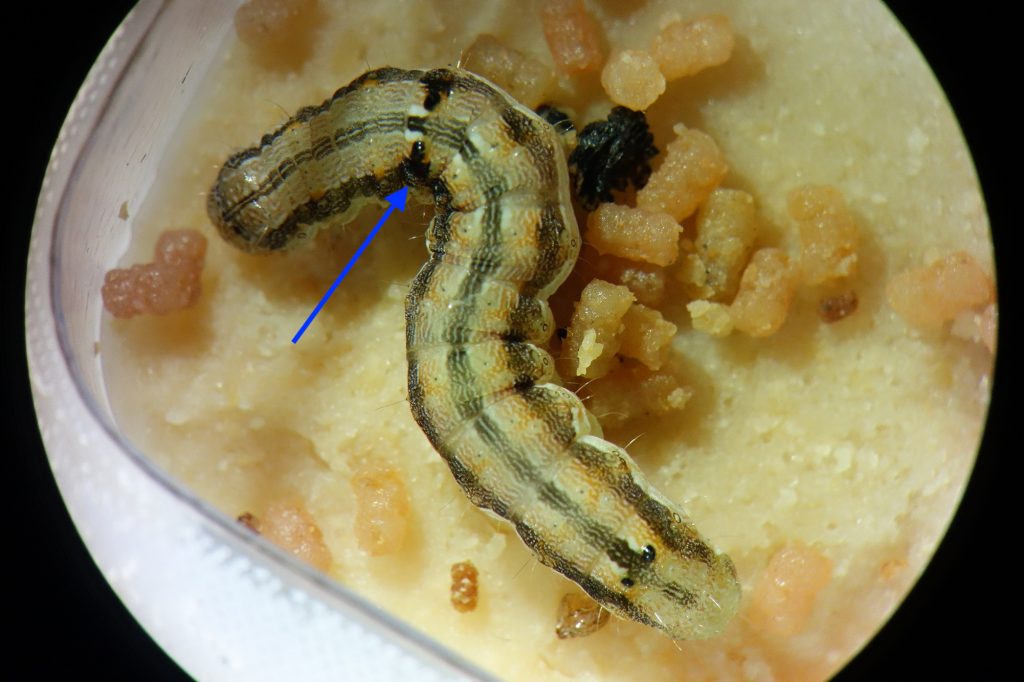

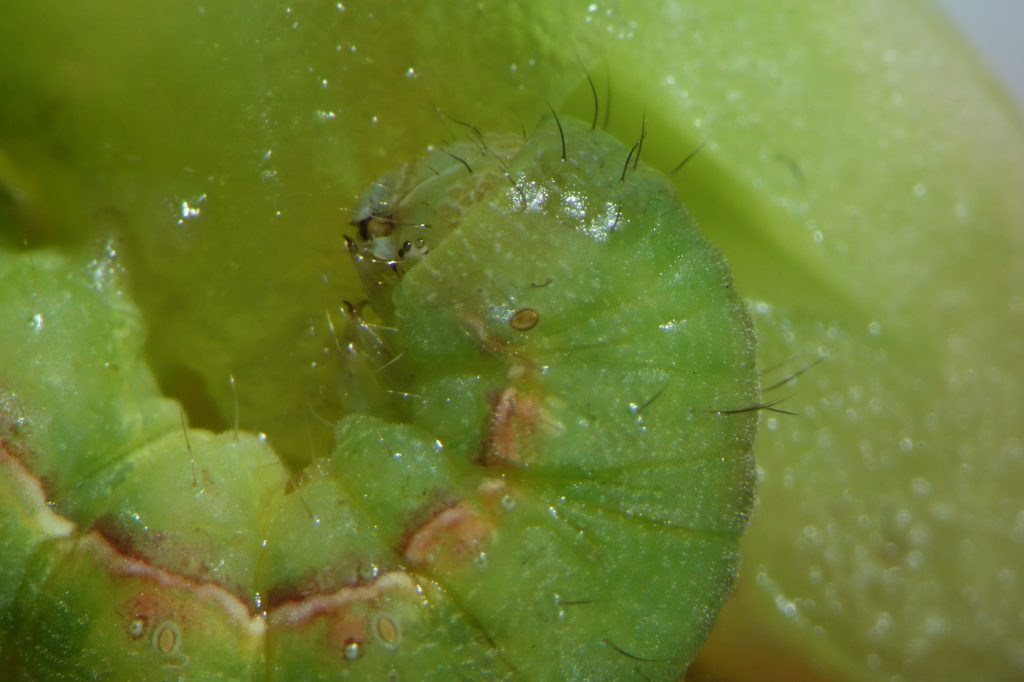
Cover image: Photo by Andrew Weeks, Cesar Australia


